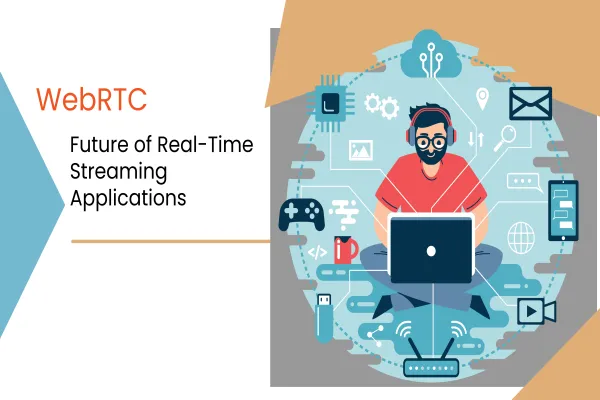Introduction

In the era of digital entertainment, streaming platforms have emerged as the go-to destination for an unprecedented expanse of TV shows, movies, documentaries, and other audiovisual content. While the sheer volume of options available is undoubtedly a boon for consumers, it also presents a significant challenge: navigating the streaming universe effectively.
The frustration of endlessly browsing through cluttered menus, struggling to find specific content amidst a sea of options, or encountering recommendations that fail to align with personal preferences is a common experience among streaming platform users. This lack of intuitive navigation can lead to disengagement, reduced usage, and even platform abandonment.
To address these navigation challenges and enhance user satisfaction, streaming platforms need to adopt strategies that prioritize clarity, personalization, and ease of use. In this comprehensive guide to streaming navigation, we will explore the multifaceted challenges users face, delve into potential solutions, and examine real-world examples of platforms that have successfully navigated this complex landscape.
Delving into the Navigation Maze: Challenges Faced by Streaming Platform Users
The challenges users encounter when navigating the vast expanse of content on streaming platforms are complex and often interconnected. Let's examine some of the key hurdles that hinder a seamless user experience:
Content Overload: The sheer volume of content available on streaming platforms is overwhelming, making it difficult for users to discover and locate relevant material. This content glut is often exacerbated by a lack of clear categorization and organization, leaving users adrift in a sea of options.
Ineffective Search Functionality: The search function on many streaming platforms falls short of expectations, failing to deliver accurate, timely, and relevant results. Users often encounter irrelevant suggestions, incomplete information, or a lack of filtering options, making it difficult to find specific content.
Unclear Categorization: The categorization of content on streaming platforms is often confusing and inconsistent, making it challenging for users to locate content that aligns with their interests. Genre labels may be overly broad or ambiguous, while subcategories may be poorly defined or buried within multiple layers of menus.
Lack of Personalized Recommendations: Generic recommendations that fail to consider individual preferences can lead to frustration and a sense of disconnect from the platform. Users often receive suggestions for content they have already seen or that falls outside their interests, making the discovery process less engaging and efficient.
Cluttered and Unintuitive Interfaces: Complex menu structures, excessive use of visual elements, and a lack of clear visual hierarchies can make navigation a tedious and frustrating task. Users may spend more time deciphering the interface than actually enjoying the content, hindering their overall experience.
Charting a Course Through the Content Labyrinth: Strategies for Enhancing User Experience
To transform streaming platforms from labyrinthine mazes into user-friendly havens, several key strategies can be implemented:
Enhancing Search Functionality: Implementing a robust search engine that understands natural language queries, offers contextual suggestions, and provides granular filtering options is crucial. Utilizing advanced algorithms to prioritize relevant results based on user preferences and viewing history can significantly improve the search experience.
Refining Content Categorization: Developing a clear and consistent categorization system that effectively organizes content based on genre, theme, mood, and other relevant criteria is essential. Employing user-friendly labels, subcategories, and visual cues can enhance navigation and discoverability, making it easier for users to find the content they are looking for.
Leveraging Personalization: Utilizing machine learning algorithms to analyze user behavior, preferences, and viewing patterns can provide valuable insights for personalized recommendations. Employing this data to generate suggestions that align with individual tastes and interests can significantly enhance the user experience and foster engagement.
Simplifying Interfaces: Streamlining the interface by reducing clutter, minimizing unnecessary visual elements, and adopting a clear visual hierarchy is crucial for intuitive navigation. Prioritizing intuitive navigation paths and ensuring that key actions are readily accessible can significantly improve the user experience.
Incorporating User Feedback: Establishing channels for gathering user feedback, conducting usability testing, and analyzing user behavior data is essential for continuous improvement. Utilizing these insights to identify areas for refinement and implement changes based on user preferences can help streaming platforms adapt to evolving user needs and expectations.
Real-World Examples: Streaming Platforms Setting the Benchmark
Several streaming platforms have taken significant strides in addressing navigation challenges and enhancing user experience:
Netflix: Netflix has established itself as a leader in streaming navigation, offering a plethora of features that cater to user preferences. Personalized recommendations, clear categorization, and a powerful search function combine to create a seamless navigation experience for its vast user base.
Hulu: Hulu has adopted a similar approach to Netflix, emphasizing personalization and ease of use. The platform's "My Stuff" section serves as a personalized hub for favorite content, while the ability to skip to specific scenes within a TV show or movie adds to the convenience.
Amazon Prime Video: Amazon Prime Video effectively utilizes its vast content library by providing a comprehensive search function, clear genre categorization, and personalized recommendations based on purchase history and viewing patterns.
Disney+: Disney+ caters to a diverse audience, including families and young children, by employing a user-friendly interface, intuitive navigation, and age-appropriate content categorization.
The Future of Streaming Platform Navigation
As streaming platforms continue to evolve and expand their content offerings, the need for effective navigation will only grow. By prioritizing user preferences, implementing advanced search and recommendation algorithms, and adopting intuitive interface design principles, streaming platforms can create a seamless and engaging user experience, ensuring that consumers can effortlessly discover and enjoy the vast array of content at their fingertips.
Conclusion
In the dynamic world of streaming, adaptation and innovation are key to ensuring users have a seamless and enjoyable experience. To explore how your streaming platform can implement effective strategies and enhance user satisfaction, connect with our team of experts today. Let us guide you in creating an intuitive and personalized navigation experience that stands out in the competitive digital entertainment landscape. Elevate your streaming service by reaching out to us on our Contact Us page. Your users deserve the best – make their streaming journey exceptional with our expertise!
Revolutionize Your Experience: Navigate with Ease!





